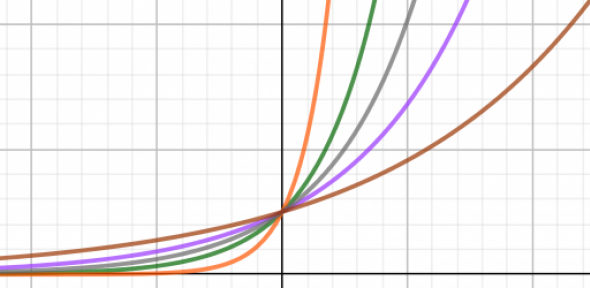
The Faculty's Plus magazine has been supporting researchers in communicating important concepts surrounding COVID-19 to policy makers and the public.
"Now more than ever it is important to communicate mathematical concepts clearly," says Julia Gog, Professor of Mathematical Biology at the Department of Applied Mathematics and Theoretical Physics (DAMTP). Gog is a member of SPI-M, a modelling group which feeds its results into the Scientific Advisory Group for Emergencies (SAGE).
This Plus article really pushed the boundary of what could be made accessible to non-specialists. Julia Gog
"There have been so many ideas and so much language which is unfamiliar to both the public, media and policy makers. For the public in particular: massive asks have been made of everyone in recent months and I think it's really important that the public can understand exactly why control measures are needed, where we are with the pandemic and what is likely to be ahead."
"I think the non-specialist media have really struggled with COVID-19 reporting. Especially very early in the pandemic, it was clear that journalists and reporters were not on top of key concepts, and for the most part the modellers most involved in COVID-19 did not have the spare capacity for more than short media quotes."
Communicating complex mathematical ideas to the general public is the aim of Plus magazine, a free online magazine about mathematics aimed at a general audience. Plus is part of the Millennium Mathematics Project, a flagship maths education and public engagement project involving staff in the Faculties of Mathematics and Education. Plus often reports on the work of Faculty researchers, but recent collaborations regarding the pandemic illustrate the importance of high quality and timely public engagement and education, and the impact it can have.
Communicating epidemiological measures
The Plus editors have worked with Gog repeatedly over the years, and drew on her expertise early on in pandemic with an article on epidemiological modelling, which includes current research but is still accessible to the public. Responding to the public concern about herd immunity, and pre-empting the need for the public to understand the effective reproduction number R of a disease, they also produced an introductory article about both concepts and the link between them.
It is in relation to this reproduction number that modellers at SPI-M foresaw problems as the pandemic progressed. "In May we hit one of the trickiest ideas to explain to policy makers: hospitals, care homes and the wider community almost had their own separate epidemics running, but clearly still interlinked to some extent," explains Gog. "I heard via a few routes of policy makers being particularly confused by what happens to [the effective reproduction number] R if we think about separate parts of the population." In fact, the mathematics behind combining values of R from different settings is quite advanced, involving topics from undergraduate level linear algebra.
To communicate this subtle issue to policy makers and the public the Plus editors, in collaboration with Gog, produced articles exploring the effect of infections crossing over between different settings, potentially resulting in a dangerously high overall value of R. The articles were pitched at two levels: a version accessible to anyone without mathematical training, containing an illustrative interactivity produced by Oscar Gillespie, and a version for those able to engage with the actual mathematics behind R values.
"Some of my colleagues had said in advance this would not be possible for a general audience, and I certainly could not on my own see how to present it," says Gog. "This article really pushed the boundary of what could be made accessible to non-specialists."
The collaboration continued a few weeks later, as lockdown measures had taken effect. "With Plus magazine's growing reputation among my colleagues, a nudge came within SPI-M that the government was likely to switch from reporting the state of epidemic using R, and the relationship to growth rates and why you'd want to use them was, at best, non-obvious. We very quickly put together an article, pitched at multiple levels so it was useful to a wide range of audience."
As of last week the government are indeed publishing growth rates. The Plus article is linked to from the gov.uk guidance document and is being picked up by the wider media.
A new experience
Besides the work with Gog, with its direct impact on government guidance, Plus magazine has been producing articles and podcasts throughout the pandemic relating to COVID-19, which have reached a wide audience. Rachel Thomas, one of the two Plus Editors, has also appeared on the Guardian Weekly Science Podcast to explain the meaning of R and its link to the concept of herd immunity.
Plus has been running successfully for many years, with an award-winning history of publishing articles, interviews, podcasts, and videos that explore all areas of mathematics. But for the editors Plus, as for so many mathematicians who joined the fight against the pandemic, the kind of work required by the pandemic represents a new experience.
"Our work ranges widely, from reporting from the International Congress of Mathematicians to producing TV series about cosmology, but rarely does it have such an immediate impact," says Marianne Freiberger, the other editor of Plus.
Rachel Thomas agrees. "This has been a great example of how important it is to communicate the maths behind current events. It has been a great experience working with Julia on these articles, and we are ready to continue the collaboration whenever it is needed."
